Harold Gillies: The Face of a Hero
Biography
Meet Harold D. Gillies:
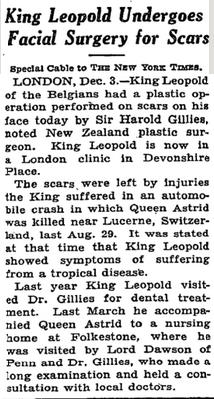
Source: New York Times Newspaper, Wednesday, December 4th, 1935
'Don’t worry Sonny, you’ll be alright and have as good as face as most of us before we’re finished with you’, Captain Gillies would say. And the poor huddle of splints and bandages that had once been a handsome guardsman would believe him and try to shake off his blank despair.' ~ a nurses recount of Gillies' beside manner
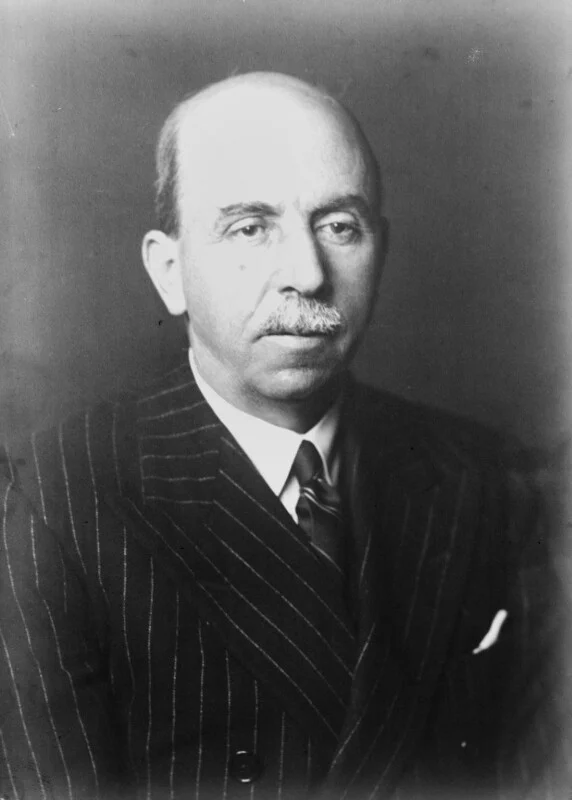
A portrait of Sir Harold Delf Gillies in 1940,
courtesy of Walter Stoneman and the National Portrait Gallery, London
Early Life
Coming from Kiwi origins, Harold Gillies would go on to become a major turning point in surgical history. Gillies was born on June 17, 1882, in Dunedin, New Zealand to a fairly large family. He spent much of his time on the family farm. Early on he excelled in academics, music, and became particularly fond of golf.
Education
Following two of his older brothers, Gillies traveled to Cambridge University in 1901 to study medicine. He described the university to be a "psychological and architectural blot". Although he didn't particularly like Cambridge, Gillies was recognized by his peers as being a "versatile and brilliant man" who was extremely devoted to his studies, as stated by a fellow classmate K.D Pringle. Gillies turned out to have a natural talent for surgery which led him to undertake formal training at St Bartholomew's Hospital, London, where he was made a Fellow of the Royal College of Surgeons and awarded St Bartholomew's Luther Holden Research Scholarship.
WWI
Gillies was 32 when the first World War began in 1914. He quickly joined the Red Cross and was sent to Belgium as a commissioned officer. It was on his journey to Belgium that deterred him from general surgery, but instead, plastic. He met Frenchman Auguste Valadier, who had set up a unit specifically for treating jaw wounds. He did this by taking tissue from other parts of the body.
This process, along with the influence of a German book about jaw and mouth surgeries, made him realize that he "had struck a branch of surgery that was of intense interest". He also claimed, "My first inspiration [for plastic work] came from the few pictures in that German book." Gillies had requested that the British Army had a plastic surgical unit, which was granted, so he was ordered by the War Office to go to Cambridge Military Hospital, Aldersot "for special duty in connection with Plastic Surgery". He went back to the War Office and handed them labels, which were used to mark wounded soldiers in French field hospitals. These men were then sent to Aldershot to be treated by Gillies.
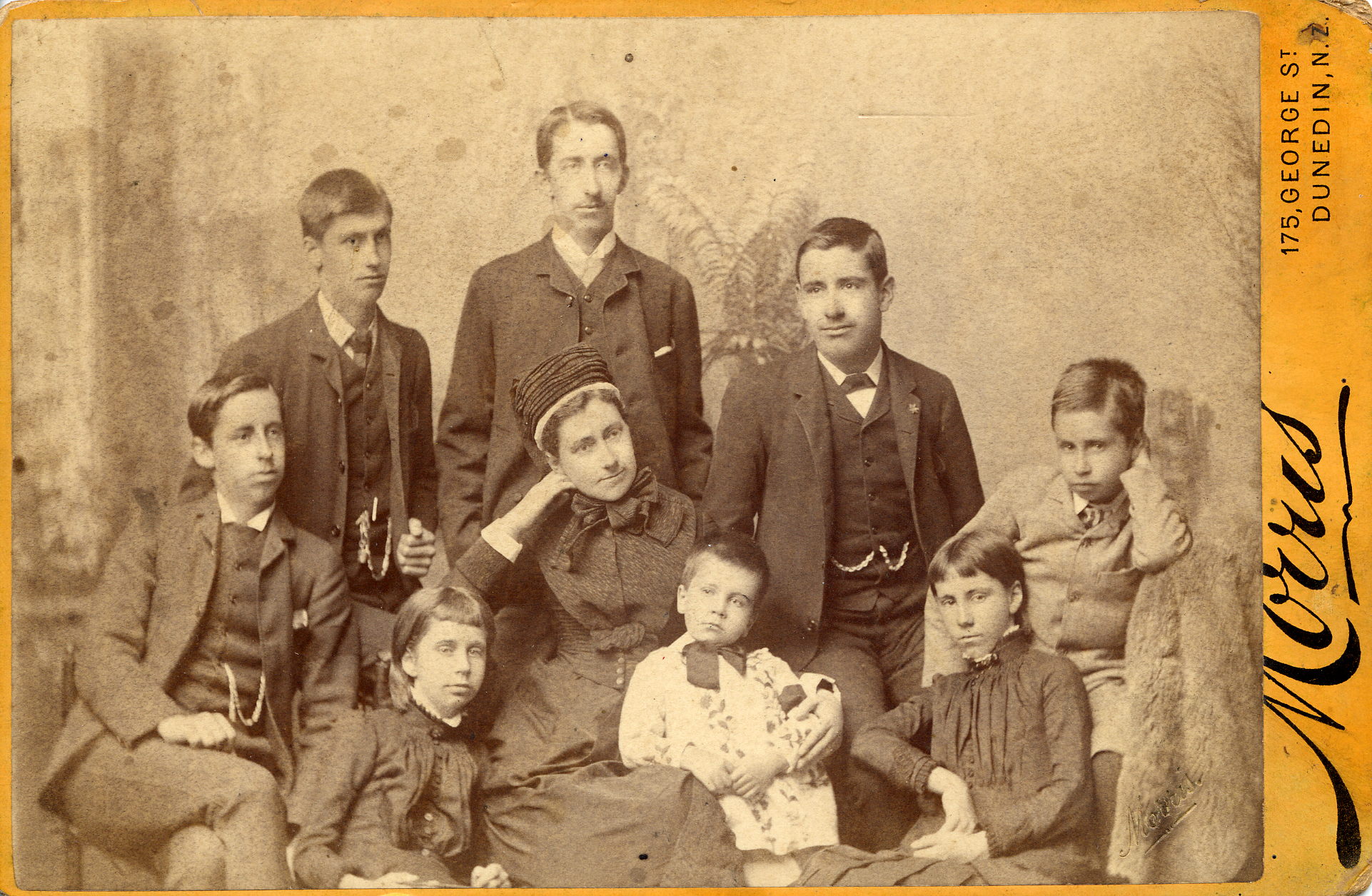
The Gillies family, (HDG is seated far right and is around eight years old)
Courtesy of The Gillies Archives of Plastic Surgery.
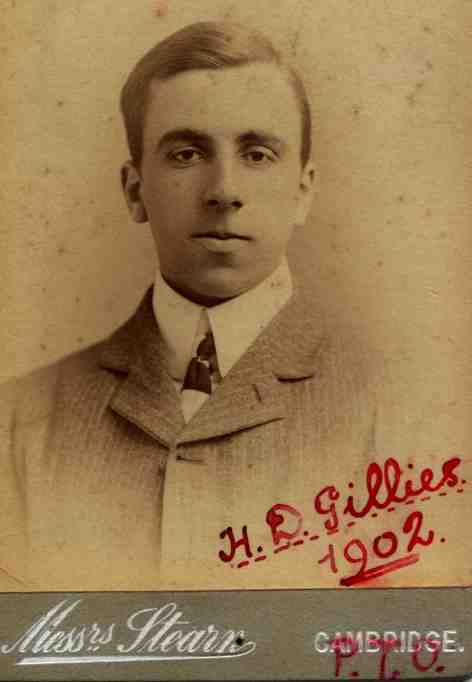
Gillies at Cambridge, in 1902,
Source: Andrew Bamji, The Gillies Archives of Plastic Surgery
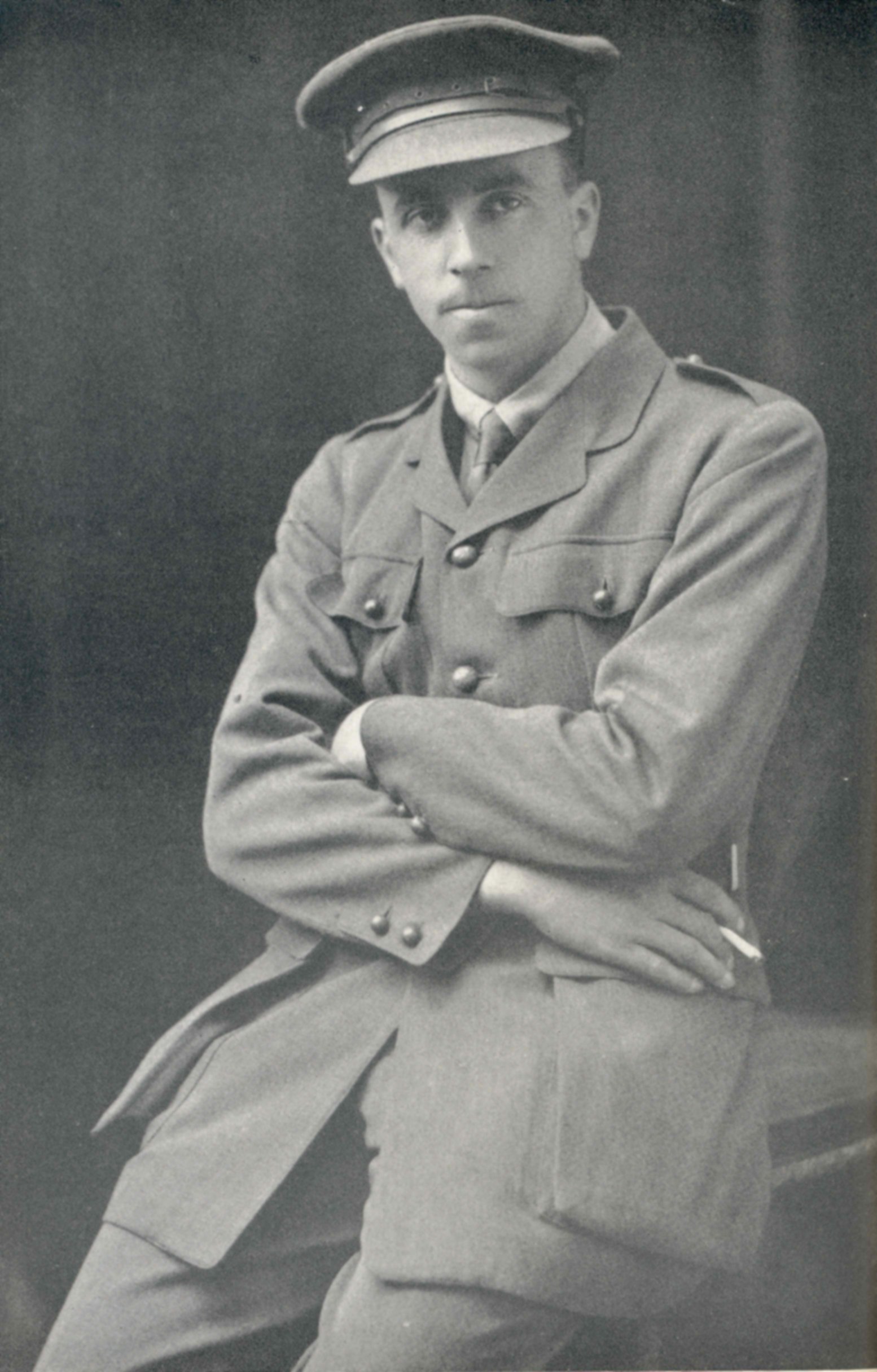
Gillies in 1915,
Source: The Gillies Archives of Plastic Surgery